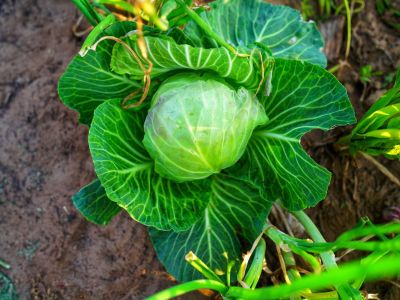What Causes Split Cabbage Heads?
Split cabbage heads usually follows a heavy rain, especially after a period of dry weather. When the roots absorb excess moisture after the cabbage head is firm, the pressure from internal growth causes the head to split. The same thing may happen when the heads are fertilized late in the season. Early varieties are more susceptible to splitting cabbages than late varieties, but all varieties can split under the right conditions.
Fixes for Splitting Cabbage
There are no easy fixes for splitting cabbage so prevention is important. Here are a few things you can do to prevent cabbage head splitting:
Keep the soil evenly moist throughout the growing season. Cabbage needs 1 to 1.5 inches (2.5-4 cm.) of water every week, either as rainfall or supplemental irrigation. Prune off a few of the roots when the heads are moderately firm by cultivating close to the plants with a hoe. Another way to break off a few roots is to grab the head firmly with both hands and pull up or give the head a one-quarter turn. Pruning the roots reduces the amount of moisture the plant can absorb and prevents splitting cabbages. Avoid fertilizing after the heads begin to firm. Using a slow-release fertilizer may help keep the nutrient levels in the soil even and prevent over-fertilization. Harvest early varieties as soon as the heads are firm. Plant cabbage early so that it matures before warm temperatures set in. This can be done as early as four weeks before the last frost. Use transplants instead of seeds to give the crop a head start. In areas with a short spring, grow cabbage as a fall crop. Plant fall crops about eight weeks before the first expected frost. Use an organic mulch to help the soil hold moisture and keep the roots cool.
When cabbage heads split despite your best efforts to prevent it, harvest the split head as soon as possible. Split heads don’t store as long as solid heads, so use the split heads first.
